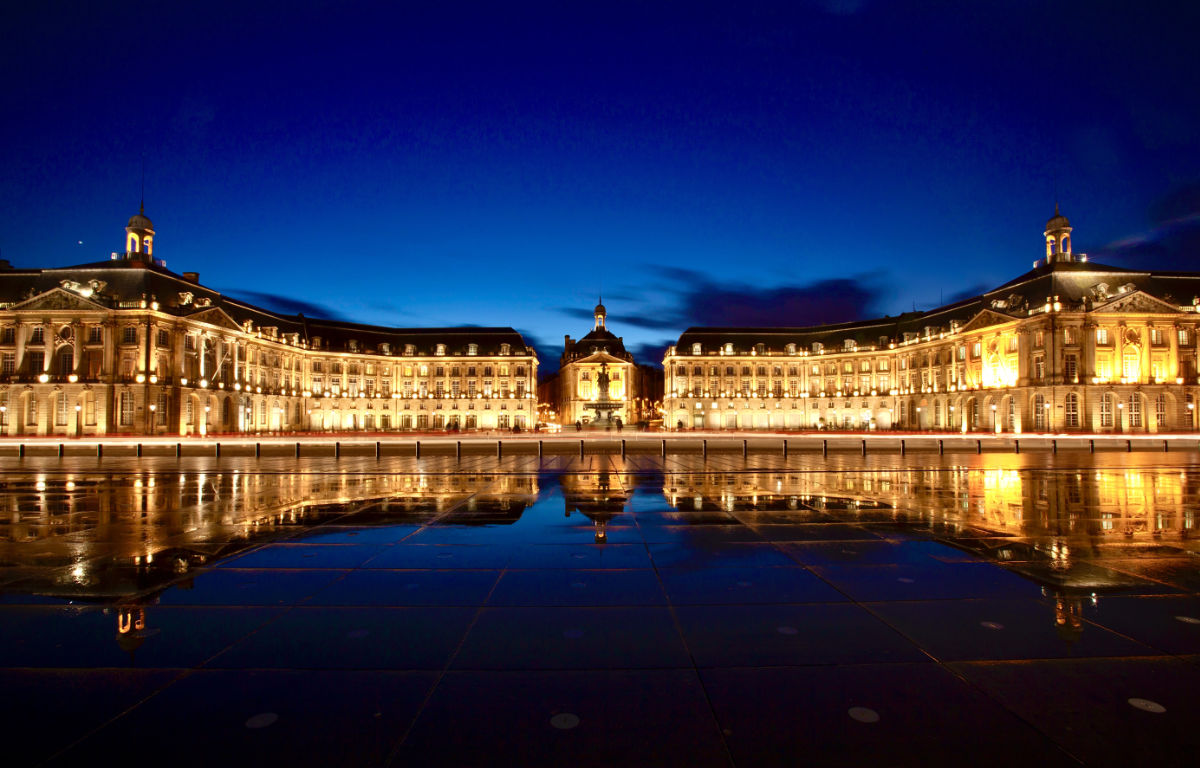
Bordeaux
Self-Guided Audio Tours
Bordeaux Walking Tour (Free)
90 minutes
2.5 miles / 4 km
Explore the rich history and vibrant culture of Bordeaux on a self-guided walking tour through its iconic landmarks, stunning architecture, and renowned wine districts.
Begin TourNestled along the Garonne River, Bordeaux is a city that effortlessly combines its historical legacy with modern elegance. Known worldwide as the capital of the wine world, Bordeaux is much more than just vineyards—it’s a city steeped in rich history, stunning architecture, and vibrant culture. Beyond the city limits, the surrounding regions offer rolling hills, charming villages, and some of the finest vineyards on the planet, making Bordeaux a must-visit destination for anyone passionate about history, wine, and the French art de vivre.
Bordeaux’s Historical Significance: From Roman Roots to a Global Wine Capital
Bordeaux’s history stretches back over 2,000 years to when it was a Roman trading post known as Burdigala. Over the centuries, it became a center of commerce, culture, and politics, particularly flourishing in the 18th century when it grew into one of France’s wealthiest cities due to its thriving wine trade. The neoclassical beauty of Bordeaux, with its grand squares and elegant stone buildings, is a testament to the city’s golden age of prosperity during the Enlightenment.
Declared a UNESCO World Heritage Site in 2007, Bordeaux’s historic center, known as Port de la Lune, remains one of the best-preserved urban areas in Europe. The city’s transformation into a cultural and economic hub, with its strong ties to the global wine industry, makes it a fascinating blend of tradition and modernity.
Top 5 Unique Characteristics of Bordeaux and the Surrounding Region
1. The Wine Capital of the World
Bordeaux is synonymous with wine, and the region’s vineyards are among the most celebrated globally. With over 7,000 wine estates, Bordeaux produces some of the most prestigious wines, including famous reds from Médoc, Saint-Émilion, and Pomerol, as well as the sweet whites from Sauternes. Wine lovers can explore the Cité du Vin, an interactive museum dedicated to the history and culture of wine, or embark on a guided tour through the Route des Vins, visiting picturesque châteaux for tastings.
2. The Historic Port de la Lune
The heart of Bordeaux’s UNESCO-listed historic center is the Port de la Lune, named for the crescent shape of the Garonne River that hugs the city. The area is home to stunning 18th-century architecture, including the Place de la Bourse, one of the city’s most iconic squares. Its impressive neoclassical façades and the nearby Miroir d’Eau, the world’s largest reflecting pool, create a perfect blend of old-world charm and modern art installations.
3. Saint-Émilion: A UNESCO Gem
Just a short drive from Bordeaux lies the medieval village of Saint-Émilion, another UNESCO World Heritage Site famous for its wine production. The village’s winding cobblestone streets, historic churches, and underground wine caves create a magical setting for visitors. Saint-Émilion’s vineyards are some of the oldest in the world, and the village itself is a testament to the long history of viticulture in the region.
4. The Garonne River and Waterfront
Bordeaux’s connection to the Garonne River has been essential throughout its history, and today, the Quais de Bordeaux offers a revitalized riverfront for locals and tourists alike. The promenade is perfect for leisurely strolls, lined with cafes, restaurants, and parks. The river also offers the chance to take a boat cruise, providing panoramic views of the city’s skyline while learning about Bordeaux’s maritime past.
5. Arcachon Bay and the Dune du Pilat
A visit to the surrounding regions of Bordeaux wouldn’t be complete without a trip to Arcachon Bay, just an hour from the city. Known for its oyster farms and sandy beaches, the bay is a popular escape for nature lovers. The Dune du Pilat, the tallest sand dune in Europe, offers breathtaking views of the Atlantic Ocean and the pine forests that stretch inland. Adventurous visitors can hike to the top of the dune or try paragliding over its golden sands.
Bordeaux Today: A City of Innovation and Culture
Today, Bordeaux has firmly established itself as a vibrant cultural center. Its wine and culinary festivals, including Bordeaux Fête le Vin and the Epicuriales, draw food and wine enthusiasts from around the world. The city is also home to a growing arts scene, with contemporary galleries, theaters, and events that celebrate everything from opera to modern dance.
In addition to its cultural offerings, Bordeaux is a forward-thinking city that’s heavily investing in sustainability. Its sleek, eco-friendly tram system and commitment to green urban planning have made it one of the most progressive cities in France, all while maintaining its historic charm.
Fun Facts About Bordeaux
Bordeaux is home to Europe’s largest urban world heritage site, with over 350 classified buildings and monuments.
The Pont de Pierre, one of the city’s iconic bridges, has 17 arches—one for each letter of Napoleon Bonaparte’s full name.
Bordeaux’s Canelés are small caramelized cakes with a custard center, a local delicacy that has been made in the city for centuries.
The Miroir d’Eau (Water Mirror) is the largest reflecting pool in the world, located in front of the Place de la Bourse.
Bordeaux’s wine region produces 900 million bottles annually, with 57 appellations spread over 120,000 hectares of vineyards.
Whether you’re drawn by its illustrious history, world-famous wines, or picturesque landscapes, Bordeaux and its surrounding regions offer a unique blend of old-world charm and modern elegance. A visit to this French gem promises a rich cultural experience in one of the most beautiful regions in the world.